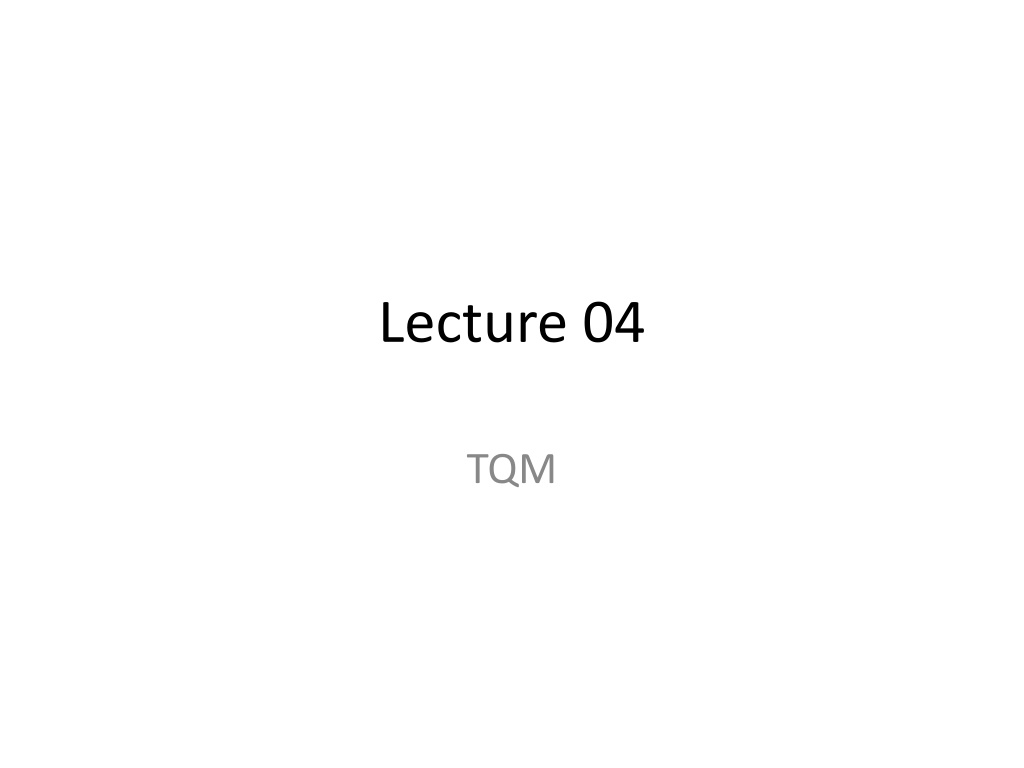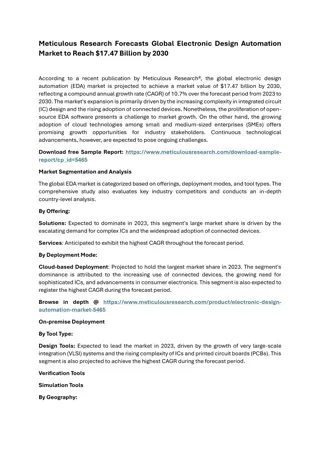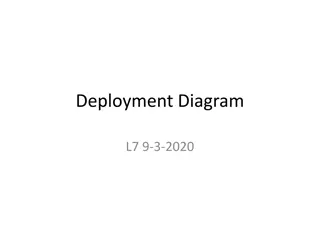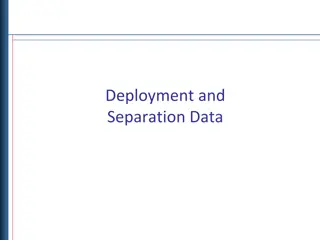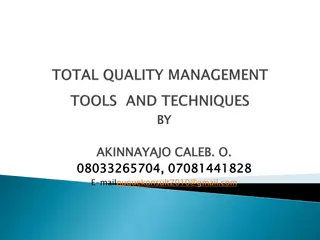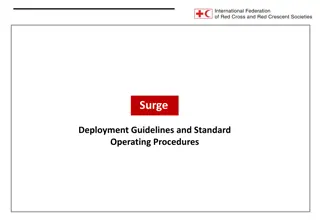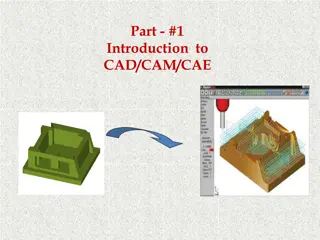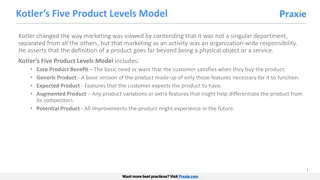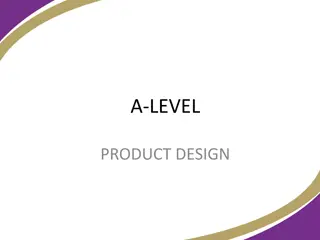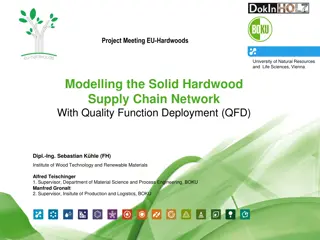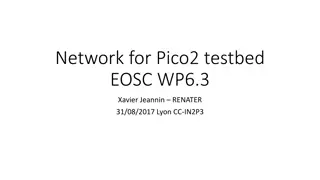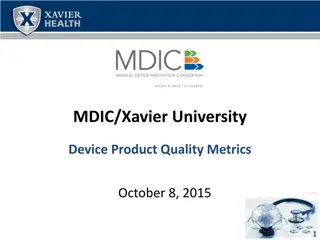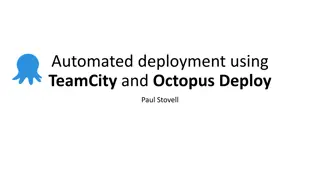Understanding Quality Function Deployment (QFD) in Product Design
Building quality into a product involves translating customer expectations into specific technical requirements. Quality Function Deployment (QFD) is a valuable tool for this purpose, enabling the analysis of relationships between technical and customer requirements in product design. By identifying important customer requirements, scoring them based on importance, and setting specific goals, QFD helps in creating a product that meets customer needs effectively. This process involves close collaboration between marketing, operations, and engineering departments to ensure the final product aligns with customer expectations.
Download Presentation

Please find below an Image/Link to download the presentation.
The content on the website is provided AS IS for your information and personal use only. It may not be sold, licensed, or shared on other websites without obtaining consent from the author. Download presentation by click this link. If you encounter any issues during the download, it is possible that the publisher has removed the file from their server.
E N D
Presentation Transcript
Lecture 04 TQM
Quality Function Deployment A critical aspect of building quality into a product is to ensure that the product design meets customer expectations. This typically is not as easy as it seems. Customers often speak in everyday language. For example, a product can be described as attractive, strong, or safe. However, these terms can have very different meaning to different customers. What one person considers to bestrong, another may not. To produce a product that customers want, we need to translate customers everyday language into specific technical requirements. 3
Quality Function Deployment However, this can often be difficult. A useful tool for translating the voice of the customer into specific technical requirements is quality function deployment (QFD). Quality function deployment is also useful in enhancing communication between different functions, such as marketing, operations, and engineering. 4
Quality Function Deployment QFD enables us to view the relationships among the variables involved in the design of a product, such as technical versus customer requirements. This can help us analyze the big picture for example, by running tests to see how changes in certain technical requirements of the product affect customer requirements. An example is an automobile manufacturer evaluating how changes in materials affect customer safety requirements. This type of analysis can be very beneficial in developing a product design that meets customer needs, yet does not create unnecessary technical requirements for production. 5
Quality Function Deployment QFD begins by identifying important customer requirements, which typically come from the marketing department. These requirements are numerically scored based on their importance, and scores are translated into specific product characteristics. Evaluations are then made of how the product compares with its main competitors relative to the identified characteristics. Finally, specific goals are set to address the identified problems. The resulting matrix looks like a picture of a house and is often called the house of quality. Next we will consider the example of manufacturing a backpack to show how we would use QFD.We will start with a relationship matrix that ties customer requirements to product characteristics, 6
Customer Requirements Customer Requirements Remember that our goal is to make a product that the customer wants. Therefore, the first thing we need to do is survey our customers to find out specifically what they would be looking for in a product in this case, a backpack for students. To find out precisely what features students would like in a backpack, the marketing department might send representatives to talk to students on campus, conduct telephone interviews, and maybe conduct focus groups. 7
Customer Requirements Let s say that students have identified five desirable features: the backpack should be durable, lightweight and roomy, look nice, and not cost very much. The importance customers attach to each of these requirements is also determined and shown in the figure. This part of the figure looks like the chimney of the house. You can see that durability and roominess are given the greatest importance. 8
Competitive Evaluation Competitive Evaluation On the far right of our relationship matrix is an evaluation of how our product compares to those of competitors. In this example there are two competitors, A and B. The evaluation scale is from one to five the higher the rating, the better. The important thing here is to identify which customer requirements we should pursue and how we fare relative to our competitors. For example, you can see that our product excels in durability relative to competitors, yet it does not look as nice. This means that in designing our product, we could gain a competitive advantage by focusing our design efforts on a more appealing product. 9
Product Characteristics Product Characteristics Specific product characteristics are on top of the relationship matrix. These are technical measures. In our example these include the number of zippers and compartments, the weight of the backpack, strength of the backpack, grade of the dye color, and the cost of materials. 10
The Relationship Matrix The Relationship Matrix The strength of the relationship between customer requirements and product characteristics is shown in the relationship matrix. For example, you can see that the number of zippers and compartments is negatively related to the weight of the backpack. A negative relationship means that as we increase the desirability of one variable we decrease the desirability of the other. At the same time, roominess is positively related to the number of zippers and compartments, as is appearance. A positive relationship means that an increase in desirability of one variable is related to an increase in the desirability of another. This type of information is very important in coordinating the product design. 11
The Trade-off Matrix The Trade-off Matrix You can see how the relationship matrix is beginning to look like a house. The next step in our building process is to put the roof on the house. This is done through a trade-off matrix, which shows how each product characteristic is related to the others and thus allows us to see what tradeoffs we need to make. For example, the number of zippers is negatively related to the weight of the backpack. 12
Setting Targets Setting Targets The last step in constructing the house of quality is to evaluate competitors products relative to the specific product characteristics and to set targets for our own product. The bottom row of the house is the output of quality function deployment. These are specific, measurable product characteristics that have been formulated from general customer requirements. 13
Setting Targets The house of quality has been found to be very useful. You can see how it translates everyday terms like lightweight, roominess, and nice looking, into specific product characteristics that can be used in manufacturing the product. Note also how the house of quality can help in the communication between marketing, operations, and design engineering. 14
Reliability Reliability An important dimension of product design is that the product functions as expected. This is called reliability. Reliability is the probability that a product, service, or part will perform as intended for a specified period of time under normal conditions. We are all familiar with product reliability in the form of product warranties. We also know that no product is guaranteed with 100 percent certainty to function properly. However, companies know that a high reliability is an important part of customer-oriented quality and try to build this into their product design. 15
Reliability Reliability is a probability, a likelihood, or a chance. For example, a product with a 90 percent reliability has a 90 percent chance of functioning as intended. Another way to look at it is that the probability that the product will fail is 1 .90 .10, or 10 percent. This also means that 1 out of 10 products will not function as expected. 16
Reliability The reliability of a product is a direct function of the reliability of its component parts. If all the parts in a product must work for the product to function, then the reliability of the system is computed as the product of the reliabilities of the individual components: Rs =(R1) (R2) (R3) . . . (Rn) where Rs= reliability of the product or system. R1... N= reliability of components 1 through n 17
Process Management According to TQM a quality product comes from a quality process. This means that quality should be built into the process. Quality at the source is the belief that it is far better to uncover the source of quality problems and correct it than to discard defective items after production. If the source of the problem is not corrected, the problem will continue. For example, if you are baking cookies you might find that some of the cookies are burned. 18
Process Management Simply throwing away the burned cookies will not correct the problem. You will continue to have burned cookies and will lose money when you throw them away. It will be far more effective to see where the problem is and correct it. For example, the temperature setting may be too high; the pan may be curved, placing some cookies closer to the heating element; or the oven may not be distributing heat evenly. 19
Process Management Quality at the source exemplifies the difference between the old and new concepts of quality. The old concept focused on inspecting goods after they were produced or after a particular stage of production. If an inspection revealed defects, the defective products were either discarded or sent back for reworking. All this cost the company money, and these costs were passed on to the customer. The new concept of quality focuses on identifying quality problems at the source and correcting them. 20
Managing Supplier Quality TQM extends the concept of quality to a company s suppliers. Traditionally, companies tended to have numerous suppliers that engaged in competitive price bidding. When materials arrived, an inspection was performed to check their quality. TQM views this practice as contributing to poor quality and wasted time and cost. The philosophy of TQM extends the concept of quality to suppliers and ensures that they engage in the same quality practices. 21
Managing Supplier Quality If suppliers meet preset quality standards, materials do not have to be inspected upon arrival. Today, many companies have a representative residing at their supplier s location, thereby involving the supplier in every stage from product design to final production. 22
Managing Supplier Quality Today s concept of quality, called total quality management (TQM), focuses on building quality into the process as opposed to simply inspecting for poor quality after production. TQM is customer driven and encompasses the entire company. Before you go on, you should know the four categories of quality costs. These are prevention and appraisal costs, which are costs that are incurred to prevent poor quality, and internal and external failure costs, which are costs that the company hopes to prevent. 23
Managing Supplier Quality You should understand the evolution of TQM and the notable individuals who have shaped our knowledge of quality. Last, you should know the seven concepts of the TQM philosophy: customer focus, continuous improvement, employee empowerment, use of quality tools, product design, process management, and managing supplier quality. 24
The Malcolm Baldrige National Quality Award (MBNQA) The Malcolm Baldrige National Quality Award was established in 1987, when Congress passed the Malcolm Baldrige National Quality Improvement Act. The award is named after the former Secretary of Commerce,Malcolm Baldrige, and is intended to reward and stimulate quality initiatives. It is designed to recognize companies that establish and demonstrate high quality standards. The award is given to no more than two companies in each of three categories: manufacturing, service, and small business. Past winners include Motorola Corporation, Xerox, FedEx, 3M, IBM, and the Ritz-Carlton. 26
The Malcolm Baldrige National Quality Award (MBNQA) To compete for the Baldrige Award, companies must submit a lengthy application, which is followed by an initial screening. Companies that pass this screening move to the next step, in which they undergo a rigorous evaluation process conducted by certified Baldrige examiners. The examiners conduct site visits and examine numerous company documents. They base their evaluation on seven categories. Let s look at each category in more detail. 27
The Malcolm Baldrige National Quality Award (MBNQA) The first category is leadership. Examiners consider commitment by top management, their effort to create an organizational climate devoted to quality, and their active involvement in promoting quality. They also consider the firm s orientation toward meeting customer needs and desires, as well as those of the community and society as a whole. 28
The Malcolm Baldrige National Quality Award (MBNQA) Categories Points 1 Leadership 120 2 Strategic Planning 85 3 Customer and Market Focus 85 4 Information and Analysis 90 5 Human Resource Focus 85 6 Process Management 85 7 Business Results 450 TOTAL POINTS 1000 29
The Malcolm Baldrige National Quality Award (MBNQA) The second category is strategic planning. The examiners look for a strategic plan that has high quality goals and specific methods for implementation. The next category, customer and market focus, addresses how the company collects market and customer information. Successful companies should use a variety of tools toward this end, such as market surveys and focus groups. The company then needs to demonstrate how it acts on this information. 30
The Malcolm Baldrige National Quality Award (MBNQA) The fourth category is information and analysis. Examiners evaluate how the company obtains data and how it acts on the information. The company needs to demonstrate how the information is shared within the company as well as with other parties, such as suppliers and customers. 31
The Malcolm Baldrige National Quality Award (MBNQA) The fifth and sixth categories deal with management of human resources and management of processes, respectively. These two categories together address the issues of people and process. Human resource focus addresses issues of employee involvement. This entails continuous improvement programs, employee training, and functioning of teams. Employee involvement is considered a critical element of quality. Similarly, process management involves documentation of processes, use of tools for quality improvement such as statistical process control, and the degree of process integration within the organization. 32
